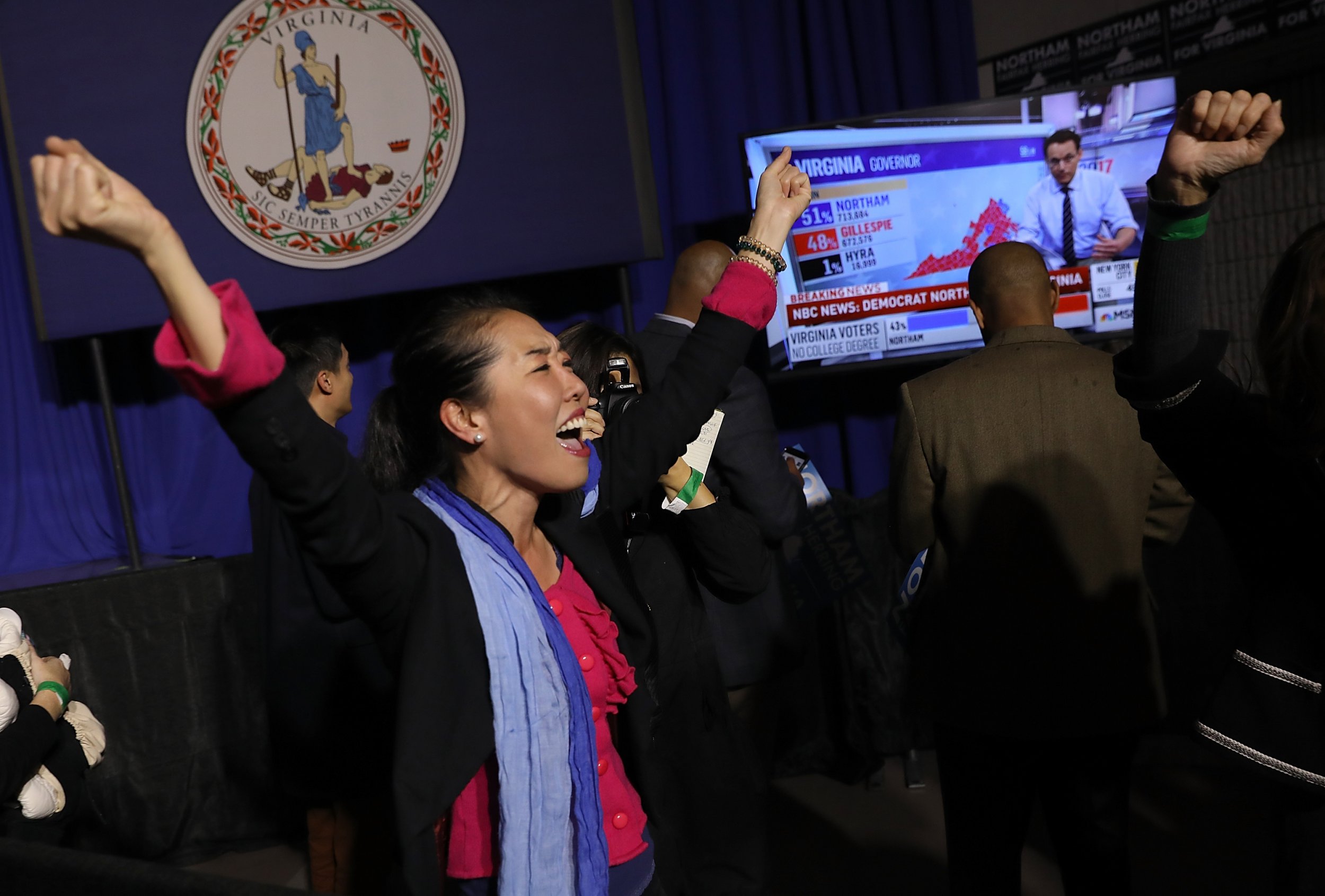
This article first appeared on the American Enterprise Institute site.
One year out from the 2018 off-year elections and days after two impressive Democratic victories in governors' contests in Virginia and New Jersey, the focus in Washington is on whether Republicans will maintain control of the Senate and the House.
Donald Trump, whose victory in the Electoral College was the biggest presidential election surprise since Harry Truman's in 1948, does not come up for re-election.
And it seems highly unlikely that Democrats could overturn Republicans' 52-48 margin in the Senate. Overall, 25 of the 35 seats up are held by Democrats, five of them in states Trump carried by double-digit percentages, while Hillary Clinton carried only one state (Nevada) and came close in only one other (Arizona) where Republican seats are up.
Only in the House of Representatives, where all 435 seats are up every two years, are Democrats given a serious chance of overturning the Republican majority.
The scene is different, however, in the states. Republicans currently hold their strongest position in state governments since the 1920s and, depending on the metric, perhaps ever.
Republicans hold 34 of the 50 governorships, an Independent holds one and Democrats hold only 15. Republicans hold party control — the governorship and majorities in both houses of the state legislature — in 24 states, including Texas, Florida, Ohio, Georgia, and Michigan among the ten most populous states, with almost half the nation's population.
Democrats have such control only in seven states, the two behemoths of California and New York, Pacific-facing Hawaii, Oregon, and Washington, and tiny Delaware and Rhode Island.
Just about half of Americans live in a state with Republican control; less than one-quarter live in states with Democratic control. Currently, Republicans hold a 1,121-791 advantage over Democrats in 49 state senates (Nebraska's senate is non-partisan and unicameral) and a 3,035-2,321 advantage in state lower houses.
As a result, Republicans and conservatives have had opportunities to affect public policy in far more of the nation than Democrats and liberals.
Republicans owe much of this dominance to the fact that election years 2010 and 2014 were very favorable to their party nationally and in most states. There is no guarantee that that will be the case in 2018, and some indications that it may be the opposite.
Republicans, thanks in large part to their strong showing in state elections in 2010, just before the 2011-12 redistricting cycle, have also had the advantage in the redistricting of congressional and state legislative seats.
This doesn't matter much in states with redistricting commissions (e.g., California, Arizona, Iowa) or in states with only two or three congressional districts (and not at all in the six states with only one House member). But it has made a significant, though often exaggerated, difference in the partisan balance in the House, primarily in the 21 states with eight or more congressional districts.
If Republicans lose the governorships (or, less likely, majorities in one legislative house) in Florida, Georgia, Michigan, Ohio, Texas, and Wisconsin, they will not be in a position in 2021-22 to produce, as they did a decade before, redistricting plans favorable to their parties.
Except for Texas and Wisconsin, incumbents in these states are term-limited; except for Texas, all these governorships could be seriously contested. North Carolina, another state that passed redistricting favorable to Republicans, has a heavily Republican legislature and a Democratic governor who has no veto over redistricting.
Interestingly, Democrats are not currently in a position to replicate the favorable parties and redistricting plans of the 2010 cycle they passed in California (which now has a redistricting commission) and Illinois and Maryland. The latter two states now have Republican governors, a very popular one in Maryland and an embattled one in Illinois.
In 2009-10 national Democrats, under the leadership of Barack Obama, Harry Reid, and Nancy Pelosi, decided to use their majorities to pass unpopular legislation like the 2009 stimulus package and the 2010 health care legislation, at the risk of losing control of multiple state governments and redistricting after the 2010 election.
Are today's national Republicans — under the leadership of Donald Trump, Mitch McConnell, and Paul Ryan — using their smaller majorities to amass a legislative record that would have similarly negative repercussions for their party in state governments and redistricting in the 2018 elections?
The answers are not yet clear.
Michael Barone is a Resident Fellow at AEI.
Uncommon Knowledge
Newsweek is committed to challenging conventional wisdom and finding connections in the search for common ground.
Newsweek is committed to challenging conventional wisdom and finding connections in the search for common ground.
About the writer
To read how Newsweek uses AI as a newsroom tool, Click here.








